Minimizing Stormwater Runoff by Disconnecting Residential Downspouts
Stormwater runoff
Stormwater runoff is rain that does not soak into the ground, but flows off a property collecting pollutants, which ultimately accumulate in streams and lakes. Some of the pollutants found in stormwater are automobile fluids, sediment, pesticides, fertilizers, trash and animal waste. Runoff volume is dramatically increased by impervious surfaces including roofs, driveways, streets, parking lots and sidewalks. Urban areas in Oklahoma and elsewhere deal with water quantity and water quality issues related to increased impervious area. The city of Tulsa is 99 percent urban and issues nearly 400 building permits each year. As these newly developed areas are covered with impervious surfaces, the 35 inches of rain that Tulsa receives on average each year (Figure 1) will become almost entirely runoff. For this reason, different stormwater management practices have been implemented to reduce the volume of runoff by increasing infiltration. By promoting infiltration, the peak discharge decreases and surface water quality improves through the reduction of pollutant loading to receiving water bodies. The interest and the application of Best Management Practices (BMP) and Low Impact Development (LID) have increased as cities continue to expand and build over pervious areas with concrete and asphalt. One key component of LID is disconnecting rain water from impervious surfaces like roads, parking lots, sidewalks, and buildings. These surfaces alter the hydrologic cycle by preventing infiltration and increasing runoff.

Figure 1. Normal annual precipitation in Oklahoma.
Downspout Disconnection
Downspouts may be directly or indirectly connected to the stormwater system. Figure 2 illustrates a downspout that is connected underground. Figure 3 shows a downspout that is connected to an impervious surface. It is common in urban and suburban homes in Tulsa to route downspouts to discharge on driveways, sidewalks or streets. As rain water travels across these surfaces, various pollutants are collected along the way and transferred to nearby rivers and lakes. Through downspout disconnection, rooftop runoff is reduced and the flow of stormwater is diverted to the permeable areas of the property to disperse and infiltrate rain water. It is a simple, inexpensive and low-maintenance stormwater control measure.
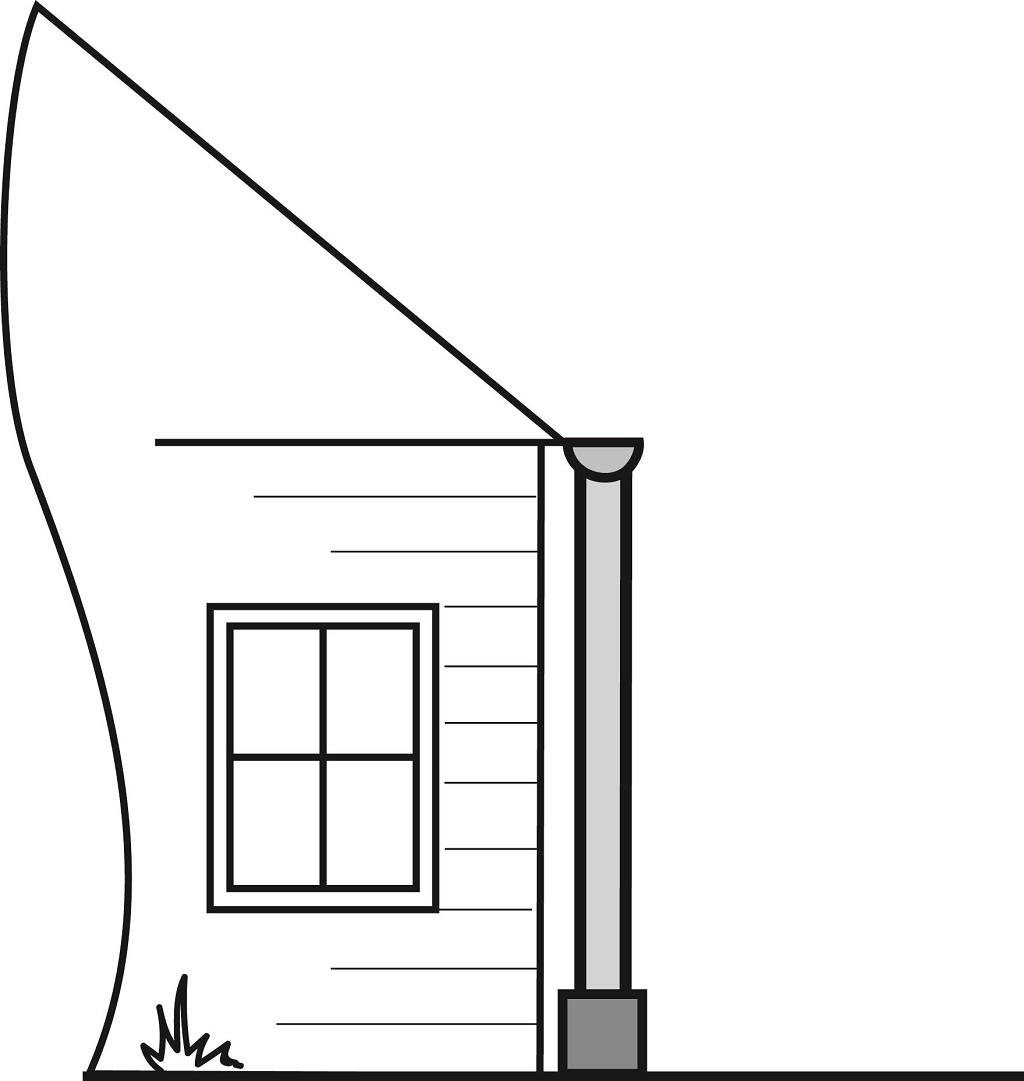
Figure 2. Downspout connected under the ground surface.
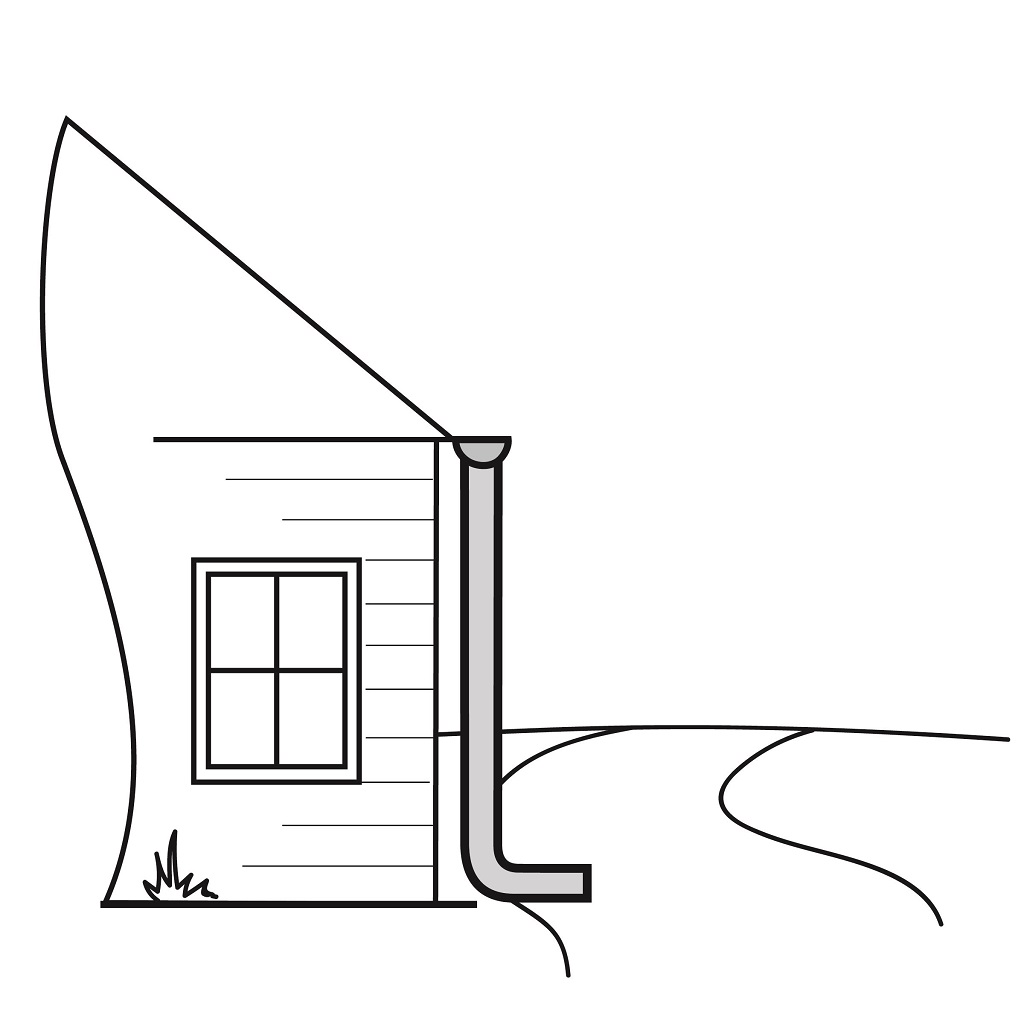
Figure 3. Downspout discharges on driveway.
Design Recommendations
The design may vary for every home and property as each will present varying conditions within the structure, landscape and soil type. Some of the key recommendations to keep in mind prior to disconnection are included below.
Structure
- Each downspout must discharge into a suitable receiving area within the property limits (Figure 4).
- The contributing rooftop area should be limited to a maximum of 1,000 ft2 per downspout.

Figure 4. Downspout receiving areas.
All downspouts around the house must drain:
- Away from the foundation of the home
- Away from the neighbors’ properties
- At least 2 feet away from any crawl-space
- At least 6 feet away from basement walls
Landscape
- Typical receiving areas for disconnected roof runoff include lawns, gardens and other existing landscaping such as shrubs.
- The receiving areas should be down-gradient of structures with slopes between 1 and 5 percent and discourage reconnection with adjacent impervious surfaces shown in Figure 5.
- Gravel-filled trenches and dry wells may have been installed by previous owners. Downspouts could be redirected to these areas.
- It is recommended that the receiving area be at least 10 percent of the drained roof area and there be at least 10 feet to the next impervious area down-gradient from the end of the downspout. A level spreader may be required to meet this receiving area recommendation.
- Downspouts should not drain over septic systems, drain fields or decommissioned underground tanks.
Soil type
The Natural Resources Conservation Service (NRCS) hydrologic soil groups categorize soils, depending on their infiltration capacity based on the runoff potential and the clay content (Table 1). Group A soils are deep, well-drained, primarily composed of sands or gravels soils and are able to absorb large volumes of water. Group D soils are not able to absorb much water and have a high runoff potential, mainly because of the high clay content. A basic test to assess the quality of the soil is to moisten a small amount of soil, form it into a ball and knead the soil between your fingers to form a flat ribbon. If the ribbon falls apart, the soil has low clay content. If it maintains its form, it has higher clay content.
Table 1. Hydrologic soil group characteristics.
| Soil Group | Runoff Potential | Clay content |
|---|---|---|
| Group A | Low | <10% |
| Group B | Moderately low | 10-20% |
| Group C | Moderately high | 20-40% |
| Group D | High | >40% |
Simple disconnection can be adopted in areas where soil conditions have moderate to well-drained characteristics, such as Group A or B soils (Table 1). Soils in these groups are optimal for simple disconnection in which downspouts direct rooftop runoff towards turf or vegetated lawns that facilitate infiltration, instead of discharging to impervious surfaces like driveways or sidewalks.
Alternative disconnection should be used if receiving areas are unable to handle anticipated rooftop runoff volumes adequately because of the presence of Group C and Group D soils. In these cases, additional LID structures should be used in conjunction with downspout disconnection. Alternative disconnection pairs well with rainwater harvesting systems, bioretention cells, vegetated swales, rain gardens or other engineered LID practices that encourage infiltration, filtration, storage and attenuation of runoff volume.
Whether it is a simple or alternative disconnection, the design should not allow water to pond for more than 48 hours after a rainfall event.
General Step-by-Step Procedure to Disconnect a Downspout
- Cut the downspout at least nine inches above the ground.
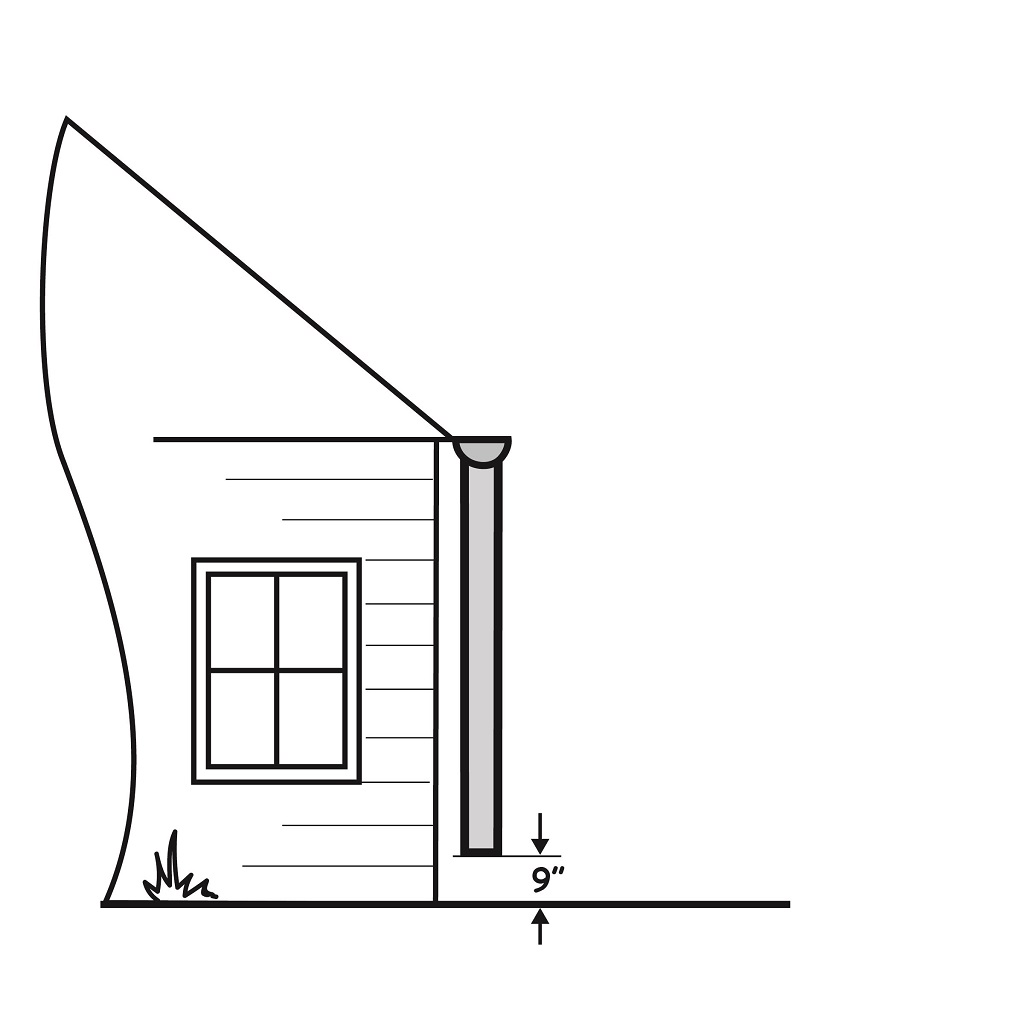
- Cap the standpipe with a test plug if the downspout was connected below the ground
surface.
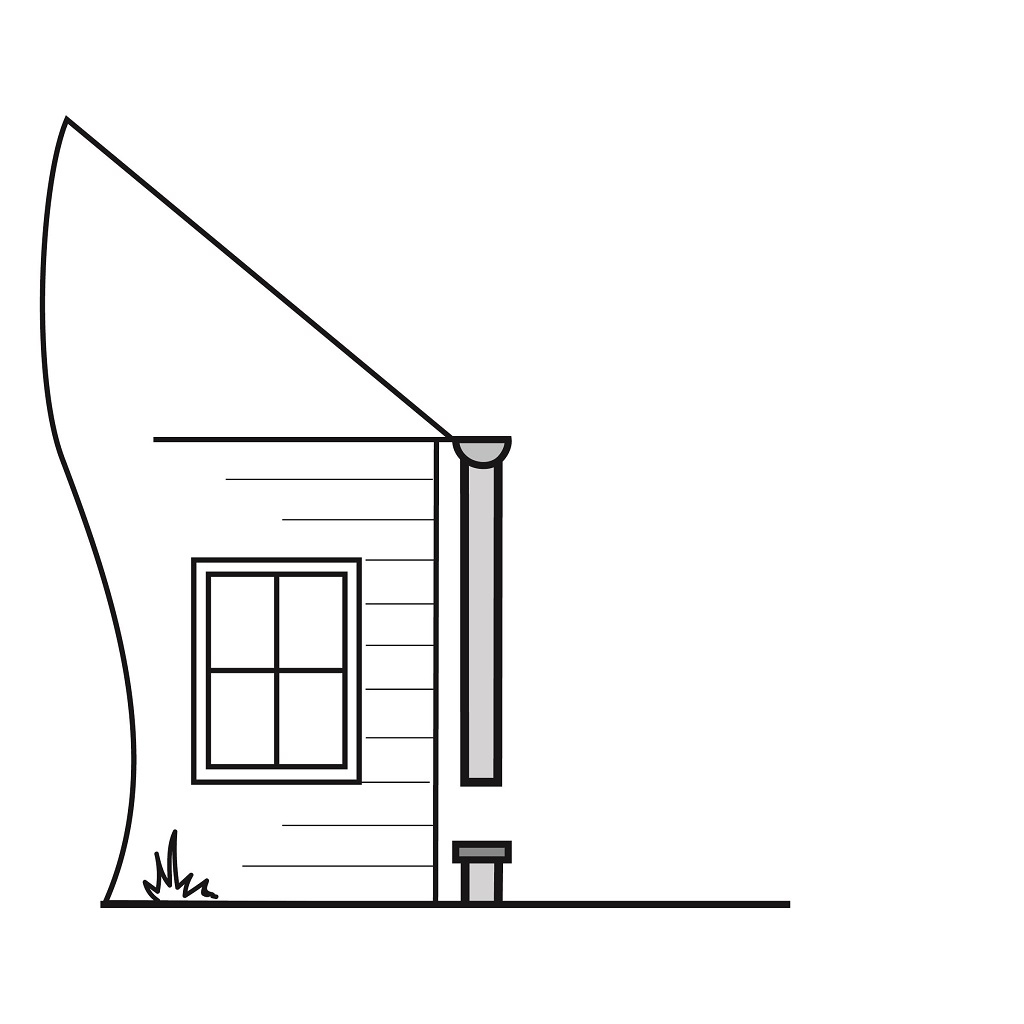
- Attach the elbow to the end of the downspout. Make sure the elbow goes over the downspout
to prevent any leaks.
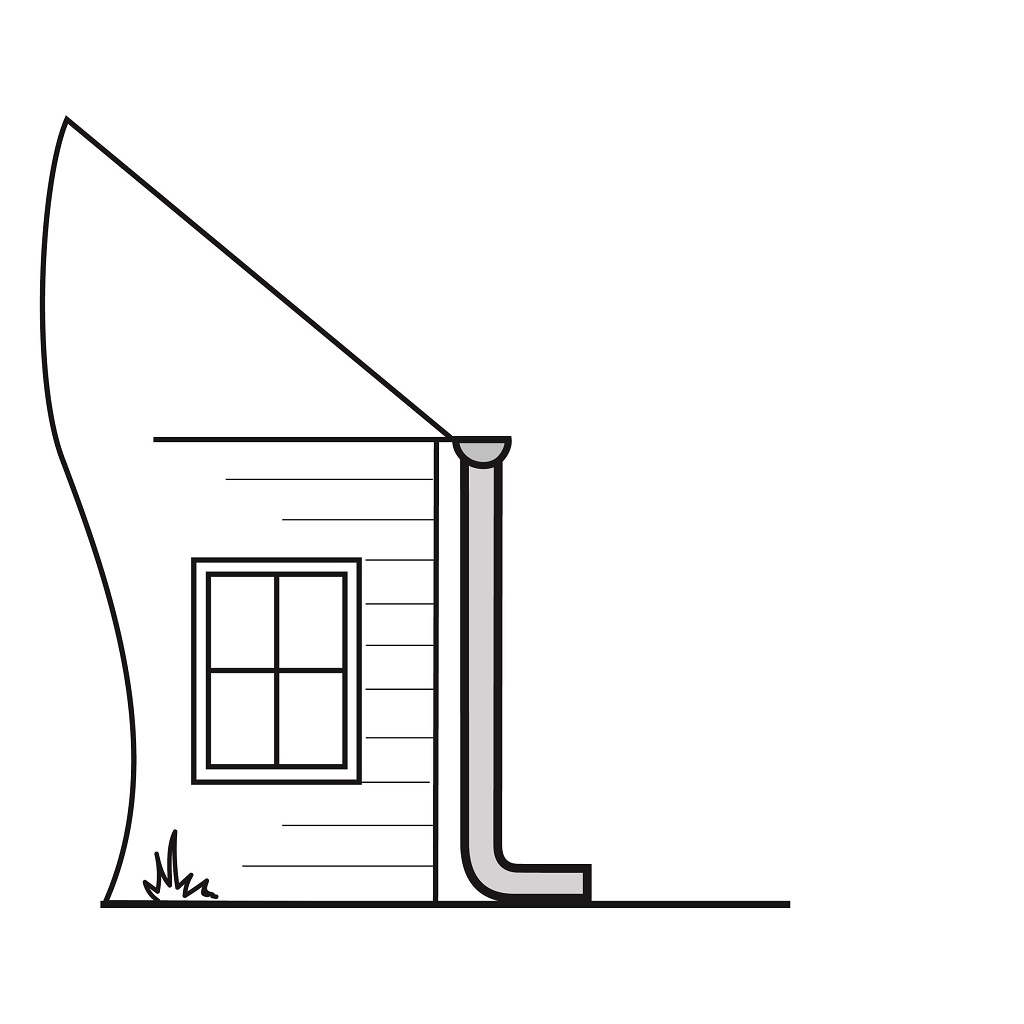
- Place a gutter or a downspout extension pipe directed towards the receiving area.
Make sure the extension goes over the end of the elbow to prevent leaks.
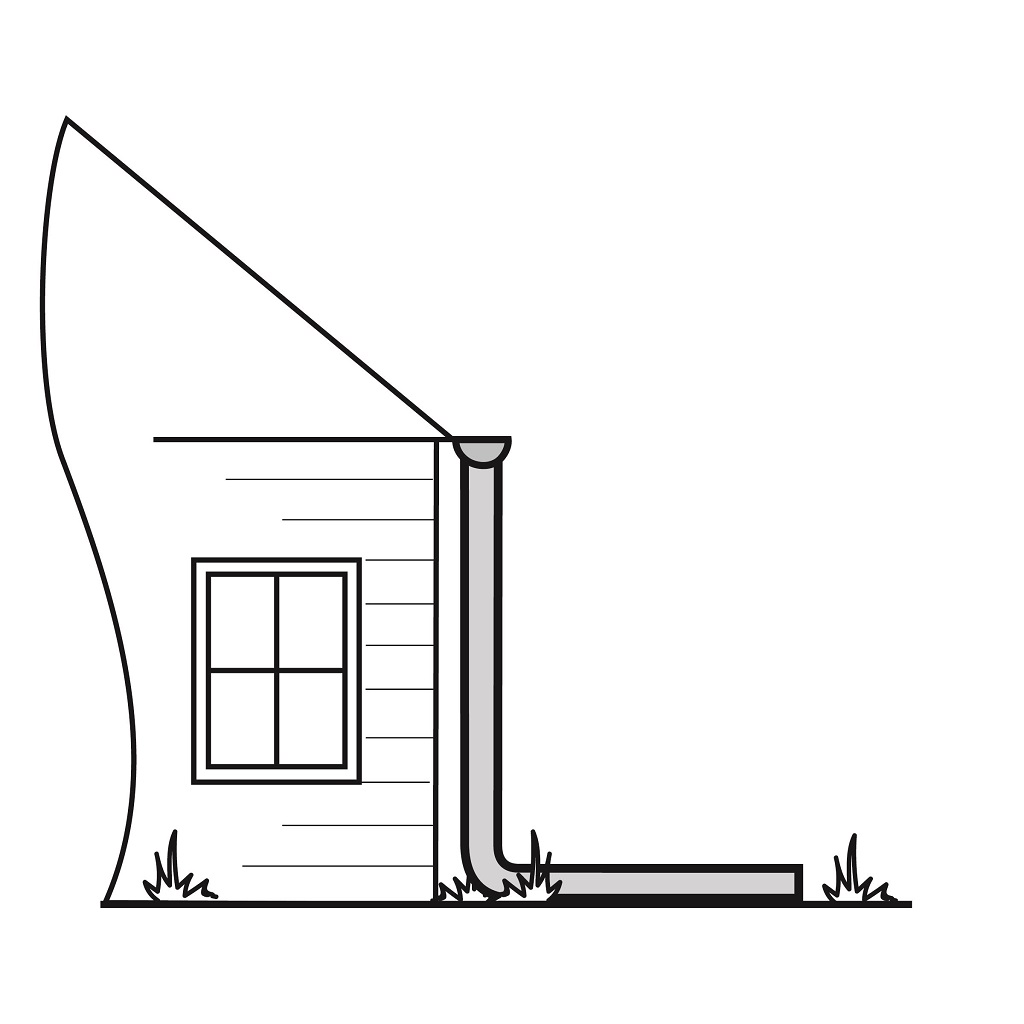
- Secure each one of the pieces with sheet metal screws in pre-drilled holes.
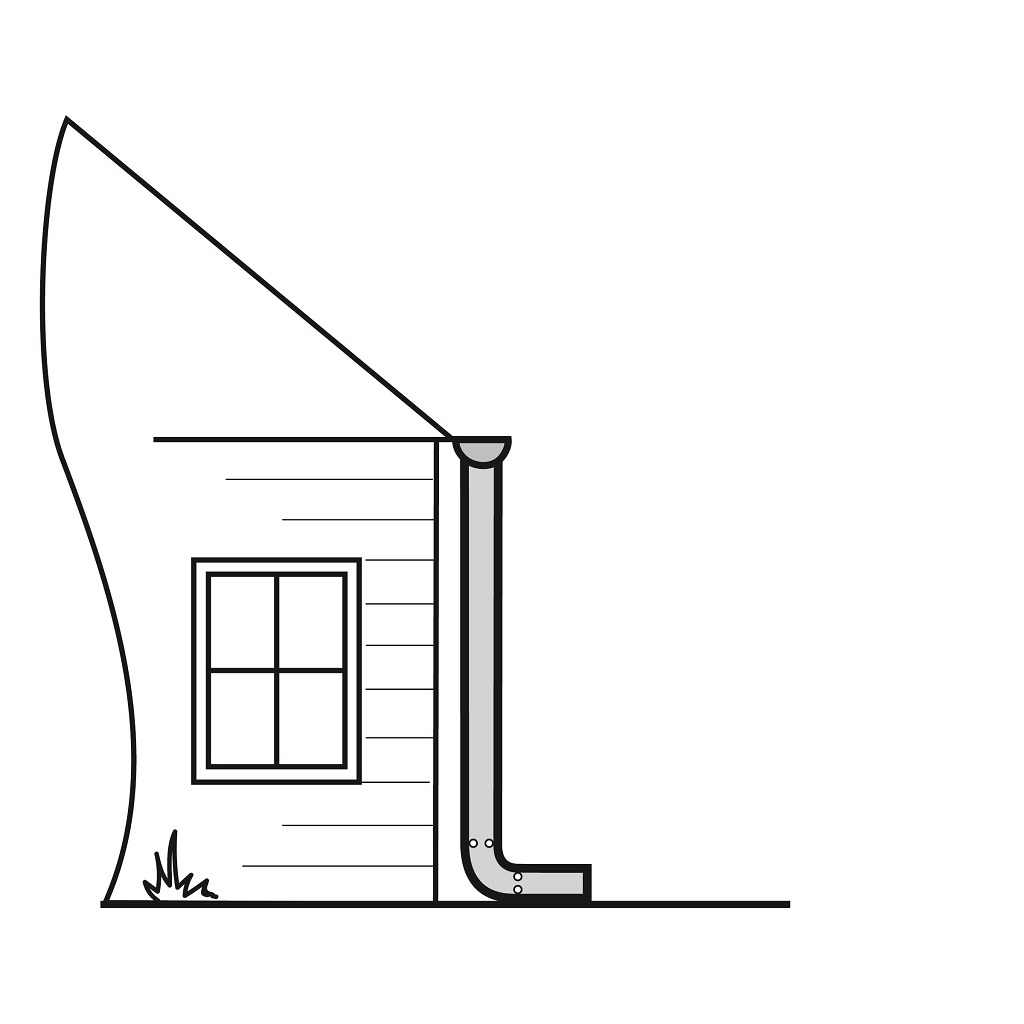
- Place a splash block on the ground at the end of the extension to prevent soil erosion.
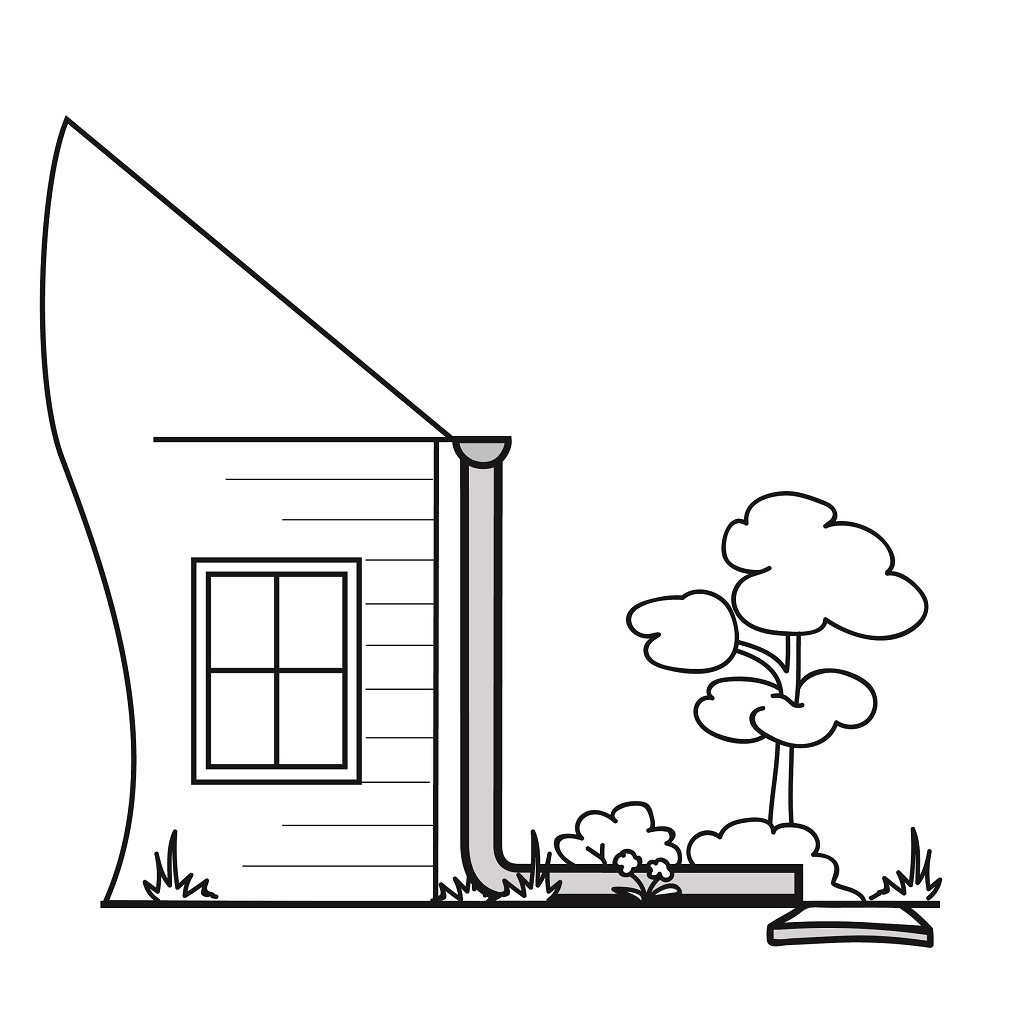
- Incorporate other LID and stormwater management practices if needed.
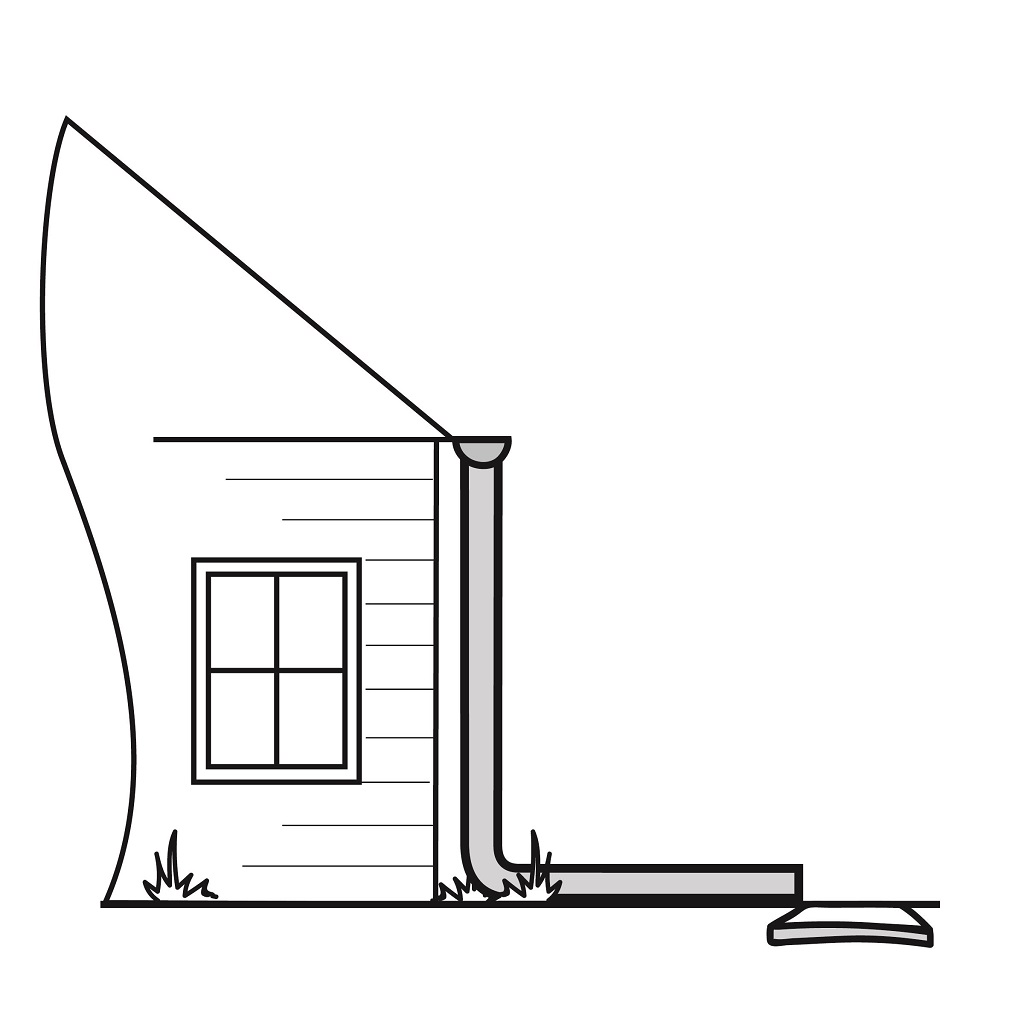
Maintenance
Proper maintenance of the gutters, downspouts and the landscape will improve the effectiveness of the disconnection and its ability to attain the desired infiltration and reduce runoff.
- Gutters need to be cleaned and cleared of leaves at least twice a year — more frequently if the home is surrounded by trees.
- All elbows and bends should be clear to prevent any clogging.
- Gutters and downspouts should be checked for any holes or gaps.
- New hangers should be placed if the gutters begin to sag.
- Make sure additional LID structures are operating effectively.
Regulations
There are currently no regulations in Oklahoma for residential downspout disconnection. However, the Oklahoma Department of Environmental Quality issues a “Small Municipal Separate Storm Sewer System (MS4) General permit OKR04 for Stormwater Discharges within the state of Oklahoma.” MS4 general permits encourage disconnection of runoff from impervious surfaces in urban areas.
Benefits
Some of the potential benefits of downspout disconnection include:
- Reduction of stormwater runoff by enhancing infiltration and decreasing the collection of pollutants along the way;
- Increasing soil moisture on the property, reducing the need of supplemental irrigation;
- Potential groundwater recharge; and
-
Prevention of overflow of the stormwater sewers.

Figure 5. Picture of downspout reconnected to sidewalk (discouraged).
Information
- To find information on the quality of the soils on the property visit the USDA Web Soil Survey and type in the address of the residence.
- To find information on alternate LID practices visit: http://lid.okstate.edu/
- Information on Oklahoma stormwater permits
- The following links include Tulsa statistics:
http://www.city-data.com/city/Tulsa-Oklahoma.html
https://www.census.gov/quickfacts/table/PST045215/40143
http://www.growmetrotulsa.com / sites / default / files / page-attachments / 2016%20Economic%20Profile_web.pdf - Information on level spreaders
Nelly Ruiz
Research Assistant
Jason Vogel
Associate Professor and Extension Specialist, Stormwater
Saleh Taghvaeian
Assistant Professor and Extension Specialist, Water Resources
